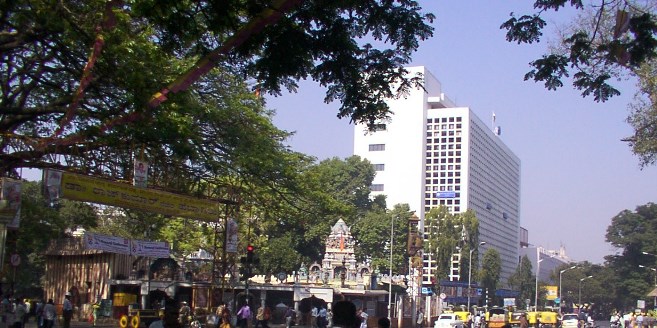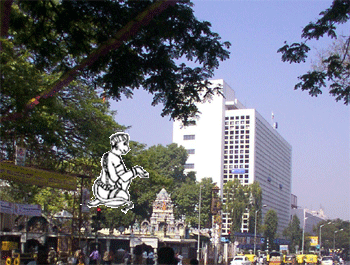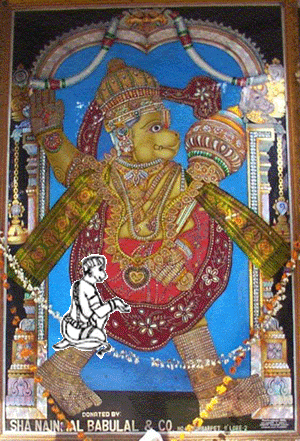
The Bengaluru
Bengaluru was then under the rule of Vijayanagar king and Kempegowda-I (1513-1569), was controlling the territory with Yelahanka as the base. He had seen the advantages of shifting the headquarters to Bengaluru from Yelahanka and hence planned a proper town with a fort as the nucleus. It is customary that new towns used to be built by the rulers on the banks of some river and Bengaluru is no exception. Bengaluru was also built on the banks of the river Vrishabhavathi and Paschmavahini. The river Virshabhavathi forms the western boundary of the then Bengaluru.
Bengaluru as capital of Kempegowda
With the permission of Vijayanagar King Achutharaya, who also sanctioned a financial grant for the new city, work started. In 1527 he built the new capital Bengaluru as per the plan. The modern town had almost all you can think of [even today it is a stand-alone city]. The town was planned to have a cantonment, temples, tanks, and market place for all trade and professional activity. The fort was built of mud with a moat surrounding the fort. The areas inside the city were divided and demarcated as districts according to the activity. Every district was known for its activity. ‘Pet’ refers to “Pete” which in Kannada is the colloquial equivalent for a business district.
Business districts of Bengaluru
 Chicka means small, and Chickpet was for small business, dodda means big and Daddapet was for
big business. Nagarthapet for jewelers, kumbarapet for potters, and Akkipete, Cottonpete, Ragipete,
and Balepete were for trading the respective commodities. Agraharas were residential places for
priests and celebrants. Even today the main wholesale market for Bengaluru remains in these localities
only.
Chicka means small, and Chickpet was for small business, dodda means big and Daddapet was for
big business. Nagarthapet for jewelers, kumbarapet for potters, and Akkipete, Cottonpete, Ragipete,
and Balepete were for trading the respective commodities. Agraharas were residential places for
priests and celebrants. Even today the main wholesale market for Bengaluru remains in these localities
only.
Gates and boundaries of Bengaluru
The town had two main streets: Chickkapete Street ran east-west and Doddapete Street ran north-south. Their intersection formed Doddapete Square — the heart of the then Bengaluru. Kempe Gowda's successor, Kempe Gowda II, built temples, tanks including Kempapura and Karanjikere tanks, and four watching towers that marked Bengaluru's boundary. The town thus built by Kempe Gowdas had as many as nine gates for the fort city. Every gate of the city was named after the place to which the way would lead. The four main gates were Halasoor [Ulsoor] for the east, Sondekoppa for the west, Yelahanka for the north, and Anekal for the south. Others were Varthur, Sarjapur, Kanakanahalli, Kengeri, and Yeshwantapura gates.
Yelahanka gate
 The gate that leads to Yelahanka [the old capital of Kempe Gowda] is known as Yelahanka Gate which is
at the end of [Doddapete] Street. British renamed this street as Avenue Road. The Yelahanka Gate was
there where today the Kempe Gowda Road and Avenue Road meet. The circle is more popularly known as
Mysore Bank Circle because of the Mysore Bank [presently State Bank of Mysore] building nearby. But
the Sri Anjaneya Temple built by the rulers still reminds one about this place as “Yelahanka gate”.
The gate that leads to Yelahanka [the old capital of Kempe Gowda] is known as Yelahanka Gate which is
at the end of [Doddapete] Street. British renamed this street as Avenue Road. The Yelahanka Gate was
there where today the Kempe Gowda Road and Avenue Road meet. The circle is more popularly known as
Mysore Bank Circle because of the Mysore Bank [presently State Bank of Mysore] building nearby. But
the Sri Anjaneya Temple built by the rulers still reminds one about this place as “Yelahanka gate”.
Yelahanka Gate Sri Anjaneya Swamy Temple
Following the Vastu, the town of Bengaluru was conceived and executed. It had a water tank Dharmambudhi at the North West of the town [which is now the central bus terminus] and the grama devata Sri Annemma [near Kapali theatre]. It is customary for the rulers of Vijayanagar to build a temple for Sri Anjaneya at the fort's entrance and their province's entrance. Bengaluru is no exception to this and when the town was planned it had Gali Sri Anjaneya temple at the western boundary of the town. The North entrance of the town was Yelahanka Gate. A temple for Lord Anjaneya had been built as protector of the Bengaluru province. Probably since the town of Bengaluru was built following Vastu, even today the town has not lost its glory. The temple is very simple. It has three sannidhi and the main sannidhi is Sri Anjaneya Swamy. One can have the darshan of Sri Narayana along with Mahalakshmi on the left sannidhi and the darshan of Mahalakshmi on the right sannidhi.
It is customary for the rulers of Vijayanagar to build a temple for Sri Anjaneya at the fort's entrance and their province's entrance. Bengaluru is no exception. When the town was planned, it had a Gali Sri Anjaneya temple at the western boundary. The North entrance of the town was Yelahanka Gate.
Yelahanka Gate Sri Anjaneya Swamy
Sri Anjaneya Swamy of this temple faces northeast [esanya] in ardha shila form. The vigraha is about three feet in height. The Lord has His left foot forward symbolising warning to the enemy army [chatru samharam]. His right leg is seen in a ready-to-move posture. His ankles have ‘thandai’. Lord’s hip is adorned by ‘kati sutra’ and ‘urudama’ [kacham] on his thigh. Lords yagyopavit across the chest is a symbol of the Brihmacharya. His left hand is resting on the left hip and holding gadha which is in raised position as a ‘prayoga’ posture. Lord’s right hand is seen raised above his shoulder and showing ‘abhya mudra’. The tail of the Lord is seen raised above his head in the ‘pranava’ formation and a small bell could be seen at the end of the tail. On his upper arm, He is wearing ‘bahuvalaya’ and on his wrist, he is wearing kankan. Lord’s chest is adorned with three haras [necklaces]. Lord’s sika is neatly tied. He has a ‘kora pel’ [projected teeth]. An enemy will see the Lord as if He is ready to vanquish him. While it is true for the enemy, for His devotees all these will give confidence that he will be protected from the enemy. It will be all the more confirmed by those eyes are showering karuna. Mere darshan of those eyes is sufficient for the devotee to gain confidence and move towards his goal.
Location of the temple: "Yelahanka Gate Sri Anjaneya Temple, Bengaluru"
Experience
Darshan of the protector of Bengaluru Sri Anjaneya Swamy at Yelahanka gate will increase the confidence of the devotees to move in the right direction.
SRI HANUMAN THINKS DIFFERENTLY, THINKS FAST
THINKS AHEAD AND ACTS FOR SURE
Ed [April 2012]
Updates: [Jan 2025]
